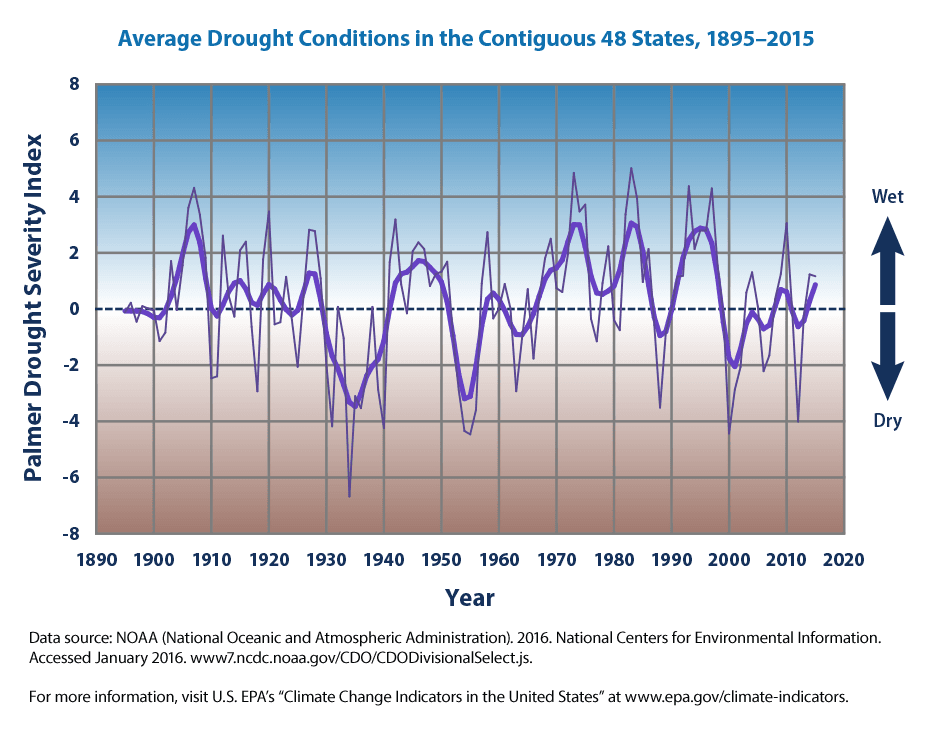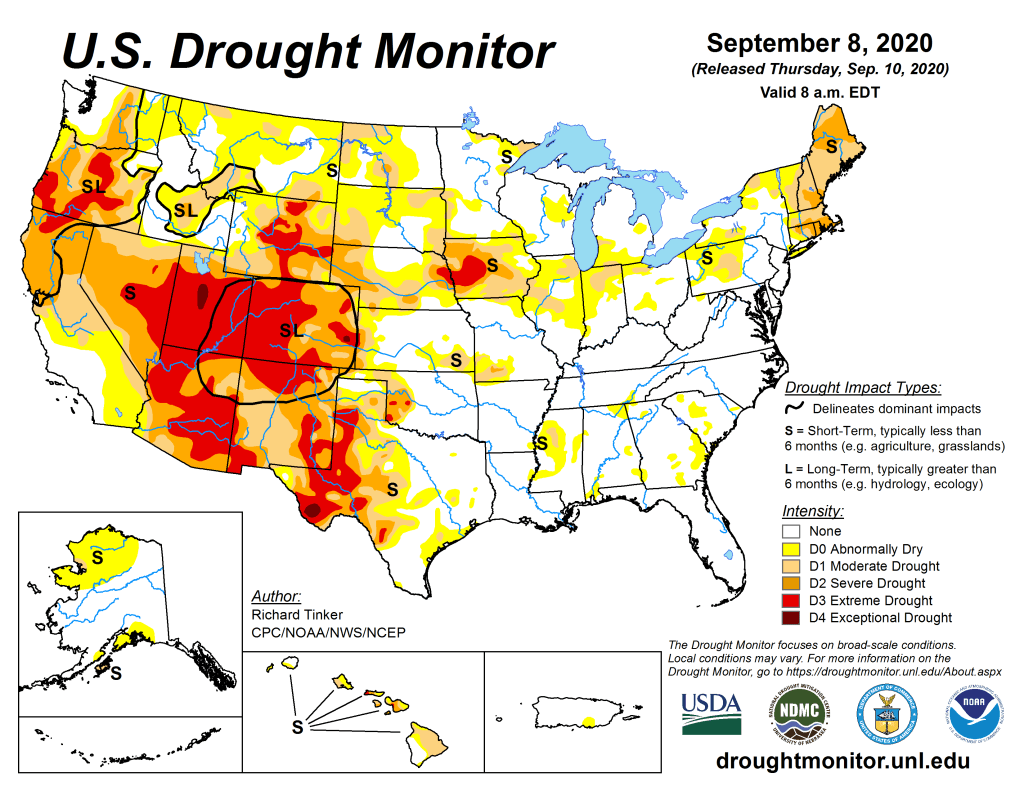From EPA.gov:
Average drought conditions across the nation have varied since records began in 1895. The 1930s and 1950s saw the most widespread droughts, while the last 50 years have generally been wetter than average (see Figure 1).

“This chart shows annual values of the Palmer Drought Severity Index, averaged over the entire area of the contiguous 48 states. Positive values represent wetter-than-average conditions, while negative values represent drier-than-average conditions. A value between -2 and -3 indicates moderate drought, -3 to -4 is severe drought, and -4 or below indicates extreme drought. The thicker line is a nine-year weighted average.”
From the U.S. Drought Monitor:

From: https://firerestorationgroup.org/
In the West, fires are burning today at higher intensities and larger spatial scales than in the recent past. With the attempted removal of Native Americans and their cultures of extensive burning, coupled with roughly 120 years of active fire suppression, we are experiencing an unraveling of ecosystem stability. This comes at a time when climate change is exacerbating drought and extending fire seasons.
[…]
Scientists are clear that we are in a severe deficit of “good fire.” Prior to 1800 approximately 4.5 million acres were burning in California annually, half of which were from tribal burning. Today our forests are two to three times more dense than they were historically. While we are not returning to the 1800s, we need to extensively restore fire on the California landscape as a pathway to resilience.
From an MSN article:
“I don’t want to be alarmist. But I think the conditions are there,” said Scott Stephens, a UC Berkeley professor of fire science and lead author of a 2018 paper that raised the specter of future mass forest fires as intense as the Dresden, Germany, and Tokyo firebombings.
“As those [trees] continue to fall, the physics of it are unchanged. If you have dead and downed logs … the fires described in warfare are possible.”
One of hundreds of major blazes to erupt in this record-breaking fire season in California, the Creek fire has underscored the urgency of reducing that monster fuel load.
The only way to do that on the broad, landscape level needed, many experts say, is with fire of a different sort.
“All of us on the paper were suggesting that if you are going to try to reduce that mass fire problem in the future, you really need to start putting prescribed fire into these stands to start whittling away at those bigger fuels,” said Forest Service research ecologist Malcolm North, one of Stephens’ eight co-authors.
[…]
Some areas have 500 to 800 trees per acre, compared with 60 to 100 pre-settlement. As North puts it, there were too many straws in the dry ground competing for water. The beetle toll was the greatest in the densest stands. There dead fuel will keep piling up for years to come.
Climate change, which accentuated drought severity and is promoting record-breaking heat waves this summer, “is like the frosting on the cake,” said conservationist Craig Thomas.
Here is a video with Scott Stephens at the UC Berkely Fire Science Lab which has some interesting photos of how California forests have changed over the century.
